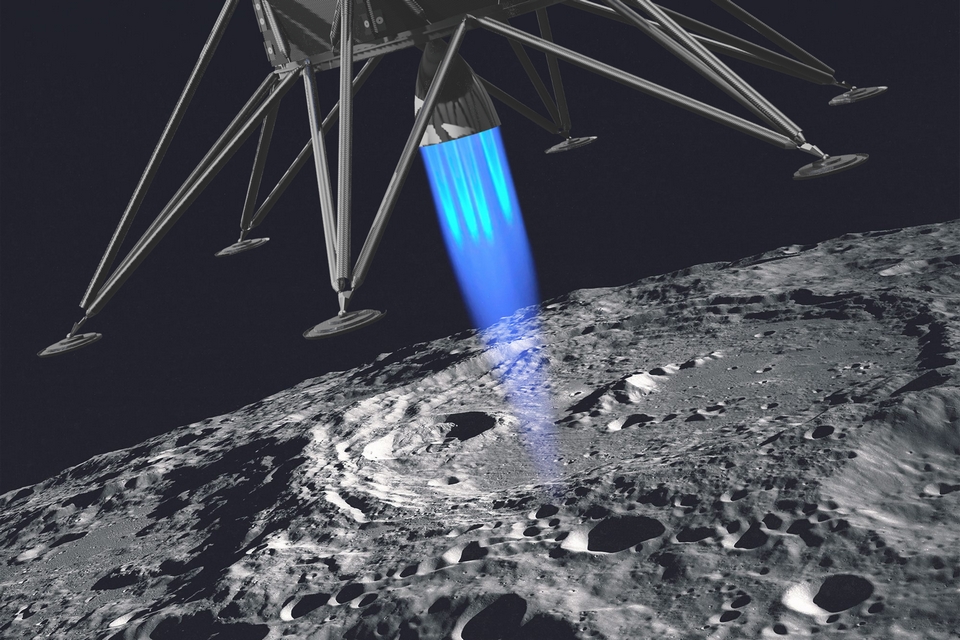The past week was full of events related to the Moon. First, the Russian Luna-25 crashed on it, and then it was the turn of the Indian Chandrayaan-3 to land. All this caused legitimate questions about whether the flight to the Moon is really such an outstanding event and how hard it is to land on it.

1. Why is flying to the Moon so complicated?
Regular flights of astronauts to the ISS, the launch of more and more satellites into space can create the impression that it is not so difficult to fly to the Moon. But in fact, for this to be done, it is necessary first to raise the orbit of the spacecraft so that its highest point (apogee) is behind our natural moon. For this, it is necessary to gain additional speed, which, in turn, leads to very high fuel consumption.
In addition, after flying around the Moon and returning to Earth, the spacecraft will still not be able to parachute down on it. To do this, it must first slow down, which also requires additional fuel.
2. Is it possible not to get to the Moon and fly into space?
The Moon is constantly moving in its orbit, and the speed of its movement is constantly changing due to the fact that this orbit is elliptical. Therefore, all stages of the flight to it must be calculated beforehand to meet it at the right point.
What happens if a spacecraft doesn’t get into it? Everything depends on the initial speed. If it is below 11.2 km/s, then the spacecraft will simply return to Earth, if it is greater than or equal to this value, it will leave the Earth-Moon system and become a satellite of the Sun. It can leave the Solar System altogether, but for this, it needs to have a speed greater than 16.65 km/s at the exit from the earth’s atmosphere.
3. Is it necessary to enter lunar orbit?
During the flight to the Moon, landing on it and returning back, spacecraft often have to enter a lunar (selenocentric) orbit. Theoretically, it is not necessary to do this for landing, because spacecraft can immediately slow down during the flyby and sit down where it is necessary.
However, there is often a need to additionally inspect the place before landing, or change the orbital plane in which the spacecraft rotates to land near the pole. In all these cases, the maneuver of entering the lunar orbit is mandatory.
Entering orbit around the Moon was also mandatory for Apollo missions. After all, the command module remained in the selenocentric orbit, which was supposed to return the astronauts to Earth. This was done for fuel economy.
4. What is a “soft landing,” and how complicated is it to implement it?
Just to fly to the Moon and get into it is not enough to make a landing. If the spacecraft does not reduce the speed, it will simply crash on the lunar surface — this is often called a “hard landing”. A “soft” landing is called, when the spacecraft does not collapse and continues to function.
Reducing the speed for landing on the Moon is both harder and easier than in the case of Earth. On the one hand, it has no atmosphere, the friction of which can be used for braking. On the other hand, the acceleration of free fall, which accelerates the spacecraft during descent, is much less here. Therefore, lunar probes rely on their own jet engines to make a soft landing.
5. How many times have the spacecraft landed on the Moon
To date, a total of 44 moon landings have been made. 22 of them were hard in the performance of automatic probes: 7 times the USSR “broke” its spacecraft on it, 9 — the USA, 2 — Japan, 1 — Russia, India, China, the European Union and Israel.
15 times, automatic spacecraft successfully carried out a soft landing. 7 of them belonged to the USSR, 5 to the USA and 3 to China.
The highest achievement of mankind was 6 soft landings of spacecraft with astronauts. All of them were carried out as part of the Apollo missions in the USA. There was not a single hard landing of a manned spacecraft on the Moon.

Follow us on Twitter to get the most interesting space news in time
https://twitter.com/ust_magazine
